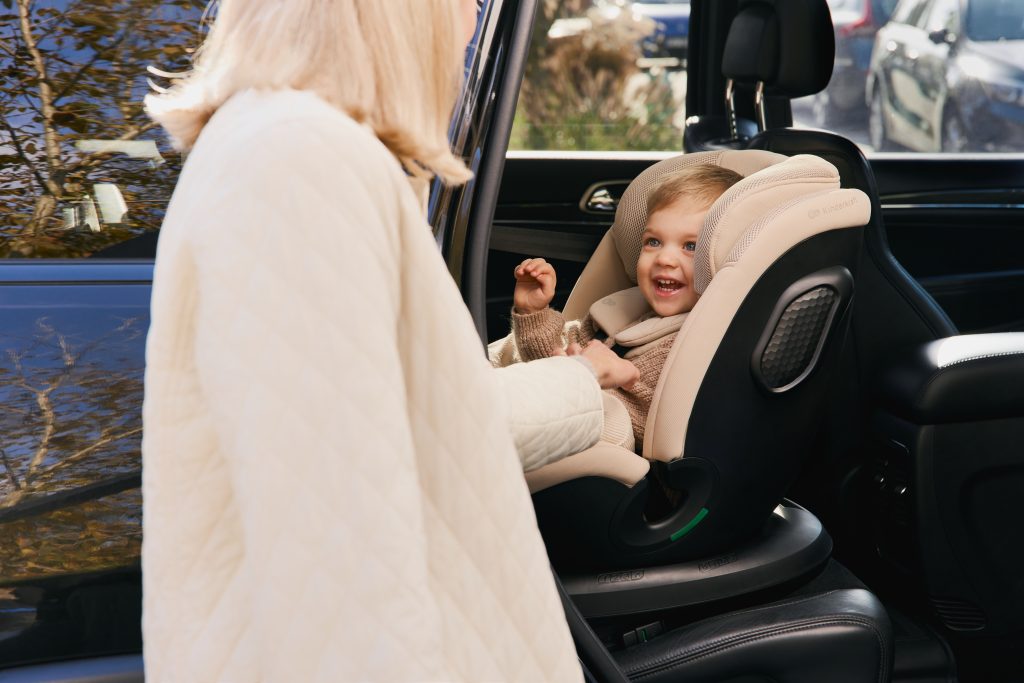Choosing the right car seat is one of the most important decisions you’ll make as a parent, not just for the first ride home from the maternity ward, but for every journey that follows. Kinderkraft, a trusted name in baby essentials and present in 63 countries, shares key factors to consider to ensure your child’s safety, comfort, and your own peace of mind.

1. Choose a car seat that allows rear-facing travel (RWF) for as long as possible
According to the R129 regulation, children must travel rear-facing until they’re at least 76 cm tall or 15 months old. But the longer they remain rear-facing, the better! It’s no coincidence that Sweden, the country with the lowest rate of fatal accidents involving children under 4, recommends keeping children rear-facing far beyond the legal minimum.
In the event of a frontal collision, rear-facing seats are 5 times safer than forward-facing ones:
- They reduce the risk of head injury by 70%.
- They lower the risk of cervical spine injuries by 73%* (Data from a Volvo study based on 35,000 car accidents.)
2. Be cautious with second-hand car seats
Buying a second-hand car seat may seem like a good deal… but it can be risky. Purchasing a second hand car seat, you have no guarantee that the seat hasn’t been involved in a previous accident and has invisible structural damage, such as micro-cracks, which greatly compromise its ability to protect your child.
Not everyone can afford replacing its car seat in the event of a “minor” accident. Kinderkraft believes safety should never be a luxury, that’s why they offer a unique Safe Car Seat program: If your Kinderkraft car seat is involved in an accident, they replace it free of charge with a brand-new one. This way, your child’s safety is never compromised.
3. Make sure the seat fits your child’s size
In order to ensure the maximum level of protection for your child, a car seat must ensure the body is held in the correct position. That’s why it’s crucial to choose a seat that suits your child’s height, weight, and age.
The key is to always match the seat to your child’s current size and development.
Important: Skip the bulky coats in the car seat. They can stop the harness or seat belt from fitting properly, reducing safety in a crash. On chilly days, buckle your child in first, then tuck them in with a warm blanket.
4. Check your car’s compatibility with the seat
Even the safest car seat is only effective if it’s installed correctly – and not all car seats are compatible with all vehicles. Differences in seat angles and the presence (or absence) of ISOFIX connectors can affect installation. So before you buy, make sure to check whether the car seat is compatible with your car.
Since 2011, all new cars sold in the EU must include ISOFIX mounting points. To check if your vehicle has ISOFIX, slide your hand between the seat cushion and backrest – you should feel two metal anchor points or look for a small label stitched into the fabric near the seat joint that says “ISOFIX”.
Whether you need a model for a newborn, a multi-stage seat, or a booster, Kinderkraft i-Size car seats range ensures a perfect fit in ISOFIX-compatible cars.
5. Choose a chemically clean car seat
Toxins have no place in a child’s world, yet not all car seats meet the same standards when it comes to chemical safety.
Kinderkraft car seats are made from non-toxic materials and rigorously tested to ensure they’re free from harmful substances such as PAHs, phthalates, flame retardants, and more. Independent institutions like Stiftung Warentest in Germany have confirmed their safety, so you can feel confident your child is protected in every way.
Explore Kinderkraft’s car seat range and find the perfect model for your little one.
Enjoy 7% off Kinderkraft’s entire range with the code WTTW7 (available until 31/12/25).













 Packages & Prices
Packages & Prices  Important Info & Policies
Important Info & Policies  Your Scan
Your Scan